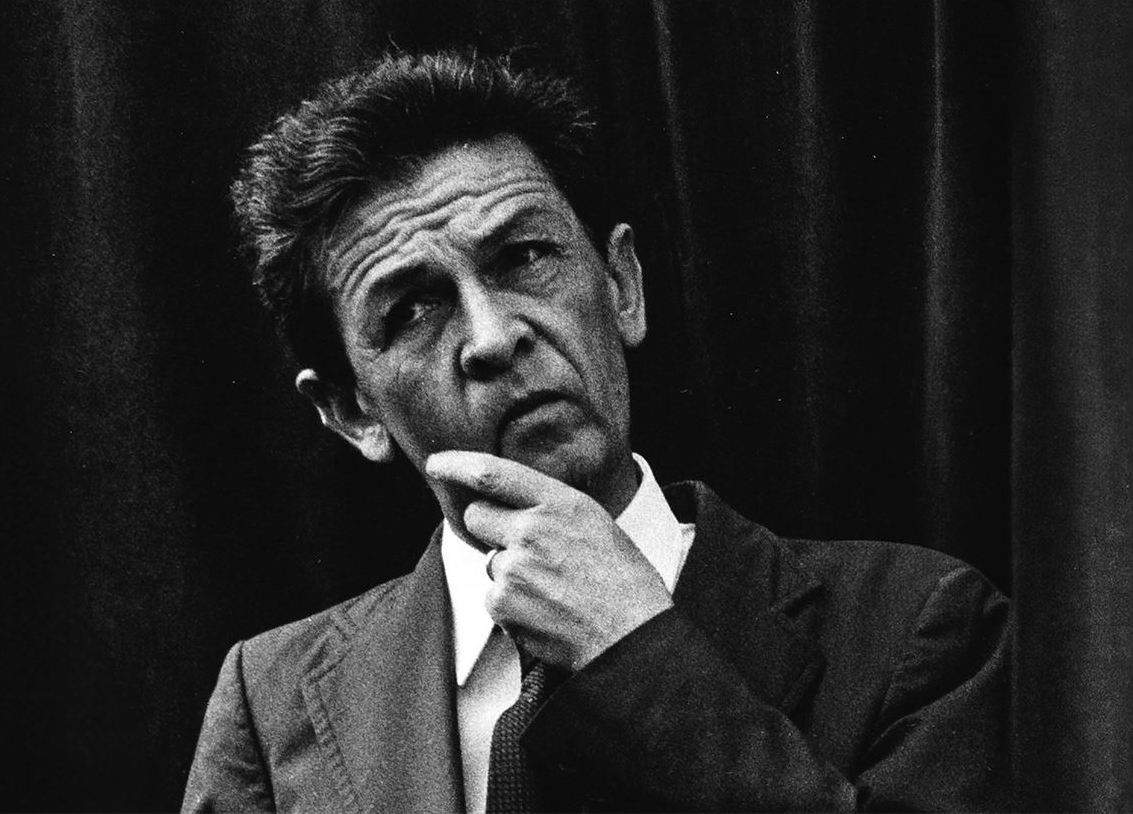An exhibition dedicated to Enrico Berlinguer (Sassari, 1922 - Padua, 1984): it is I luoghi e le parole di Enrico Berlinguer (The Places and Words of Enrico Berlinguer ) and is being hosted from June 11 to August 25, 2024 at the Museo Civico Archeologico in Bologna, is conceived, organized and implemented by theEnrico Berlinguer Association - For the Preservation and Enhancement of the Cultural Heritage of the Italian Left, Fondazione Duemila - Center for Studies and Research on Culture, Education, Political and Administrative Innovation and the Renato Zangheri Center for Studies and Research, in collaboration with the Civic Archaeological Museum of Bologna’s Civic Museums Sector and under the patronage of the Emilia-Romagna Region and the Municipality of Bologna.
Enrico Berlinguer was one of the leading figures in the political history of the 20th century. Secretary of the Italian Communist Party from 1972 to 1984, and before that a militant and leader of his party. A leader of rare moral caliber, rooted in the real country and respected by his opponents. Capable of a modern and far-sighted political vision that is still relevant today, Enrico Berlinguer is alive in the collective memory of the generations that knew and loved him and in those that followed who, although they did not live through his era, consider him equally a symbol.
On the centennial anniversary of his birth, and forty years after his death, the aim of the exhibition is to help revive Enrico Berlinguer’s political legacy by tracing his biography through original audiovisual, sound and photographic materials and archival documents.
The exhibition, curated by Alessandro d’Onofrio, Alexander Höbel, Gregorio Sorgonà and Carlo De Maria, is divided into five main thematic sections: The Affects, The Executive, In the Italian Crisis, The Global Dimension, Current Events and the Future. The section The Affects is dedicated to the representation of the more emotional, private and family dimension of Berlinguer’s life. In addition to archival materials, the section is enriched by books, photographs and personal items belonging to the leader’s daily life made available by his family. The second section, The Executive, traces the history of Berlinguer as a party leader by reconstructing his entire path of communist militancy from his enrollment in the youth section of the PCI in Sassari in 1943 to his election as Deputy Secretary of the PCI in 1969. The third section, In the Italian Crisis, reconstructs the era in which Enrico Berlinguer, elected secretary of the PCI in 1972, led the party at the height of the Italian crisis: the section reconstructs the context in which the communist leader operated, tracing the crucial moments of his political biography until his untimely death in 1984, against the backdrop of a profound crisis in society. The fourth section, The Global Dimension, presents the salient aspects of Berlinguer’s political action in relation to the international dimension: his reflections on the events in Chile, the redefinition of the relationship with the Soviet Union, Eurocommunism, the liberation movements in Vietnam, and the mending of relations with the People’s Republic of China, to name but a few. Finally, the last section, Current Events and the Future, questions Berlinguer’s political legacy as a central figure in the republican pantheon, appreciated and recognized beyond the confines of his own world and capable of drawing attention to global issues and problems that have become increasingly pressing in recent decades.
Alongside sections strictly devoted to the leader’s political biography, three focuses delve into key elements of the historical political context of Berlinguer’s years at the helm of the PCI. The first is The World of Berlinguer,where Berlinguer’s dense network of international relations and his role as a global leader is represented and restored; the second is Political Violence, Massacres and Terrorism in Italy, where the long trail of attacks and criminal actions that from 1969 to 1984 bedeviled the country’s democratic life is reconstructed; the third is A Season of Reform, where the laws for the approval of which the PCI’s contribution was decisive are presented and re-enacted, measures that were fundamental to the expansion of the boundaries of democratic citizenship and the construction of the modern welfare state.
The exhibition, which previously ran from Dec. 15, 2023 to Feb. 25, 2024 at the Mattatoio in Rome, is enriched in its Bologna stop with a new section devoted to the close relationship between Berlinguer and the militants of Emilia-Romagna who provided exceptional support for his political strategies.
The Berlinguer in Emilia-Romagna focus consists of two parts devoted to two major phases of the communist leader’s political biography. The first, placed between the 1940s and 1950s, sees Berlinguer at the head of the FGCI, at a time when the youth federation of Emilia-Romagna was making great efforts to give a strong impetus to the national organization. The second section includes the period between 1972 and 1984 with Berlinguer as national secretary of the PCI and with memorable rallies at regional Unity festivals, political and union appointments in Bologna, and finally with a shot dated May 1, 1984, about a month before his death.
For all information, you can visit the event’s official website.
 |
| An exhibition on the life of Enrico Berlinguer at the Civic Archaeological Museum in Bologna |
Warning: the translation into English of the original Italian article was created using automatic tools. We undertake to review all articles, but we do not guarantee the total absence of inaccuracies in the translation due to the program. You can find the original by clicking on the ITA button. If you find any mistake,please contact us.